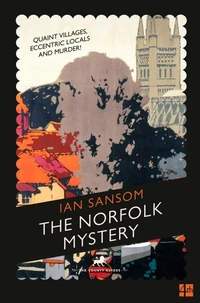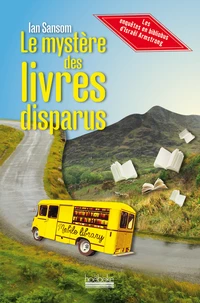September 1, 1939. A Biography of a Poem
Par :Formats :
Disponible dans votre compte client Decitre ou Furet du Nord dès validation de votre commande. Le format ePub protégé est :
- Compatible avec une lecture sur My Vivlio (smartphone, tablette, ordinateur)
- Compatible avec une lecture sur liseuses Vivlio
- Pour les liseuses autres que Vivlio, vous devez utiliser le logiciel Adobe Digital Edition. Non compatible avec la lecture sur les liseuses Kindle, Remarkable et Sony
- Non compatible avec un achat hors France métropolitaine
 , qui est-ce ?
, qui est-ce ?Notre partenaire de plateforme de lecture numérique où vous retrouverez l'ensemble de vos ebooks gratuitement
Pour en savoir plus sur nos ebooks, consultez notre aide en ligne ici
- Nombre de pages320
- FormatePub
- ISBN978-0-06-298461-6
- EAN9780062984616
- Date de parution24/09/2019
- Protection num.Adobe DRM
- Infos supplémentairesepub
- ÉditeurHarper
Résumé
One poet, his poem, New York City, and a world on the verge of change. W. H. Auden, a wunderkind, a victim-beneficiary of a literary cult of personality, became a scapegoat and a poet-expatriate largely excluded from British literary history because he left. And his poem, "September 1, 1939, " was his most famous and celebrated, yet one which he tried to rewrite and disown and which has enjoyed-or been condemned-to a tragic and unexpected afterlife.
These are the contributing forces underlying Ian Sansom's work excavating the man and his most celebrated piece of literature. But Sansom's book is also about New York City: an island, an emblem of the Future, magnificent, provisional, seamy, and in 1939-about to emerge as the defining twentieth-century cosmopolis, the capital of the world. And so it is also about a world at a point of change-about 1939, and about our own Age of Anxiety, about the aftermath of September 11, when many American newspapers reprinted Auden's poem in its entirety on their editorial pages.
More than a work of literary criticism or literary biography, this is a record of why and how we create and respond to great poetry.
These are the contributing forces underlying Ian Sansom's work excavating the man and his most celebrated piece of literature. But Sansom's book is also about New York City: an island, an emblem of the Future, magnificent, provisional, seamy, and in 1939-about to emerge as the defining twentieth-century cosmopolis, the capital of the world. And so it is also about a world at a point of change-about 1939, and about our own Age of Anxiety, about the aftermath of September 11, when many American newspapers reprinted Auden's poem in its entirety on their editorial pages.
More than a work of literary criticism or literary biography, this is a record of why and how we create and respond to great poetry.
One poet, his poem, New York City, and a world on the verge of change. W. H. Auden, a wunderkind, a victim-beneficiary of a literary cult of personality, became a scapegoat and a poet-expatriate largely excluded from British literary history because he left. And his poem, "September 1, 1939, " was his most famous and celebrated, yet one which he tried to rewrite and disown and which has enjoyed-or been condemned-to a tragic and unexpected afterlife.
These are the contributing forces underlying Ian Sansom's work excavating the man and his most celebrated piece of literature. But Sansom's book is also about New York City: an island, an emblem of the Future, magnificent, provisional, seamy, and in 1939-about to emerge as the defining twentieth-century cosmopolis, the capital of the world. And so it is also about a world at a point of change-about 1939, and about our own Age of Anxiety, about the aftermath of September 11, when many American newspapers reprinted Auden's poem in its entirety on their editorial pages.
More than a work of literary criticism or literary biography, this is a record of why and how we create and respond to great poetry.
These are the contributing forces underlying Ian Sansom's work excavating the man and his most celebrated piece of literature. But Sansom's book is also about New York City: an island, an emblem of the Future, magnificent, provisional, seamy, and in 1939-about to emerge as the defining twentieth-century cosmopolis, the capital of the world. And so it is also about a world at a point of change-about 1939, and about our own Age of Anxiety, about the aftermath of September 11, when many American newspapers reprinted Auden's poem in its entirety on their editorial pages.
More than a work of literary criticism or literary biography, this is a record of why and how we create and respond to great poetry.


















